Vitamin D: Shedding light on diabetes, MS and cancer
Could a ray of sunshine hold the key to preventing MS, diabetes and even bowel cancer? Vitamin D - made naturally in skin exposed to strong sunlight - appears to reduce the risk of developing these, and a rash of other diseases. We examine the evidence to find out why as well as hearing how seaweed looks set to ignite a biofuel boom in the future, why a good night's sleep might make traumatic memories worse and how scientists have made multicellular life in the lab in just 60 days...
In this episode

01:34 - The Epidemiology of Vitamin D
The Epidemiology of Vitamin D
with Elina Hypponen, University College London
Chris - Up first this week is University College London Reader in Epidemiology and Public Health, Elina Hypponen; so how deficient are we?
Elina - I think we are pretty deficient especially at this time of year. Everything of course depends on which thresholds we use to define vitamin D deficiency. If we consider what many scientists nowadays call the optimum concentrations, up to 90% of us have serum levels that are lower than that.
Chris - So where does the majority of the vitamin D that's washing around in my 90% deficient body currently come from?
Elina - Well currently, it only comes from oily fish that you might be eating because that's the main dietary source in the UK diet. We currently don't have any meaningful food fortification strategies which leaves the UK diet fairly deficient in vitamin D. During other times of year, most notably in the summer, we get most of the vitamin D through sunlight induced synthesis in the skin, but at the moment, there is no sunlight induced synthesis because the suns rays don't reach the Earth at the right angle to induce any synthesis in the skin.
 Chris - So how does that process actually take place? What is the sunlight doing in the skin to make the vitamin D?
Chris - So how does that process actually take place? What is the sunlight doing in the skin to make the vitamin D?
Elina - It converts the vitamin D precursor that is present in the skin to provitamin D which then can be metabolised further to vitamin D and active metabolites.
Chris - Is it any aspect of light or is it specifically one colour of light that does that best?
Elina - It's a certain wavelength of UVB radiation.
Chris - You actually need to see UVB in order to do it?
Elina - That's right.
Chris - What times of year do we get to the point where actually the sunlight has not got enough UVB in it to make the vitamin D we need?
Elina - When we look at the population studies, we see a very clear, beautiful pattern in serum 25(OH)D concentrations which are the marker for vitamin D nutritional or vitamin D status in general. If you look at those, the concentrations typically are at their highest around September time which is reflecting the synthesis during the whole of the summer. But from October onwards, there starts to be a very steady decline in concentration and they go down until March. After which, the concentration starts slightly to rise again and that's a very, very strong pattern that we can see in the UK.
Chris - I saw an advert in Australia when I was there and it said, "If you are shorter than your shadow then you're probably not making enough vitamin D."
Elina - Yeah, I think that's a nice rule of thumb.
Chris - In other words, when we've got short days in winter, we just haven't got enough light input. So what sorts of complications and consequences are there of the population, having this vitamin D deficiency?
Elina - Sometimes, even for a researcher who is working in the field, it can be quite overwhelming the amount of health outcomes that are associated with vitamin D. It starts from bone health but then extends to more or less any possible chronic disease as well as infectious diseases. For me, it's always been quite comforting, to think about the vitamin D receptors which are required for the mediation of the hormonal actions of vitamin D. They are present all over the body, so they are in major organs such as the brain, heart, pancreas, skin, also in pregnancy-specific tissues such as the placenta and the uterine lining. If there is a receptor for a hormone, then most likely that hormone has, or at least has had, some sort of influence on the function or metabolism in that body.
Chris - You said that the vast majority of the population are going to be getting quite vitamin D deficient as the winter progresses. So come March, what are the consequences for the average person in the population? What diseases tend to rear their ugly heads or become more common as a consequence of this?
Elina - In population studies, we see associations with diabetes markers, we see increases in blood pressure, lung function is improved after certain points. Various types of consequences are potential. The problem is that the causality underlying many of these associations hasn't been proven. The randomised trials have given very good evidence for outcomes such as osteoporosis and others which are related to bone health and more recently, there was the Cochrane Review which is a meta-analysis of all randomised controlled trials which showed that vitamin D supplementation was associated with an overall 6% of reduction in mortality risk. So there are various types of potential outcomes but there is much for us to learn.
Chris - What about the disease that the guy we're going to be speaking with next - George Ebers, he works on multiple sclerosis - What about the association with that?
Elina - Well I haven't personally worked that much with multiple sclerosis but I have worked more with type 1 diabetes and that's really what initially sets me to become interested in vitamin D. We did a study using a birth cohort from Northern Finland which was initiated in the 1960s when they used to have this policy of giving very high doses of vitamin D supplementation to infants. They gave 2,000 international units which is 5 times more than currently recommended to all infants, or at least that was the recommendation. When we looked at the association between the vitamin D supplementation in infants and their subsequent risk of type 1 diabetes, there was really a strikingly strong reduction. So the risk was 80% lower for those infants who had received vitamin D supplementation compared to those who hadn't. There was also independent evidence for a dose dependent effect, so that when we only looked at those children who all had received vitamin D supplementation, the association was stronger the higher the dose had been. That was a very striking indication from an observational study. Type 1 diabetes is very closely related to multiple sclerosis because they are both autoimmune conditions and many of the etiological pathways would apply equally to both of them.
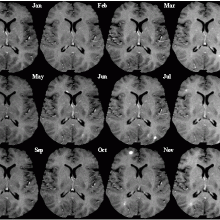
08:17 - Vitamin D Deficiency and Multiple Sclerosis
Vitamin D Deficiency and Multiple Sclerosis
with Professor George Ebers, Oxford University
Hannah - Why are people with low vitamin D levels at risk of multiple sclerosis? One person who's been studying this extensively and is now urging the government to fortify food in Scotland with vitamin D to protect people is Oxford University Neurologist George Ebers. Hello, George. So first of all, can you explain to us what actually is multiple sclerosis?
George - It's the commonest chronic neurological disease that affects young adults. We think it's autoimmune and for most people, over time, it leads to progressive disability.
Hannah - Why would vitamin D levels be linked to the immune system and also the brain as well?
George - I think what we can say is that the circumstantial evidence has always been in favour of some relationship between MS risk and sunshine. 50 years ago, we knew that if you were from the British Isles and you moved to Australia or you moved to South Africa, your risk of MS plummeted. It's very clear cut. So that implicated sunshine even back then, and gradually over time, we've learned that the main biological effects of sunshine are mediated through vitamin D, and evidence has come in which is now directly implicating vitamin D as a main environmental risk factor in the disease.
Hannah - What kind of evidence has been coming in? Has it been epidemiological studies, for example, the ones that Elina was talking about and other genetic studies as well?
George - It comes from several sources. So just on the epidemiological side, if you look at the fine mapping of the risk of MS in a country like France, where people don't move very much, you can show that the pattern of MS occurrence in the various regions of France fits almost exactly the distribution of ultraviolet radiation. If you take the end of the winter, say February, the end of the winter for France, then in fact, the UV radiation map - which is generated by the satellites that are orbiting the Earth - maps very, very much onto the prevalence of MS by region. That was the epidemiological part.
Now the genetics part has been much more recent and several things have happened. The main gene region that predisposes you to MS turns out to be regulated by vitamin D and then a number of the small genes that make you susceptible turn out to have disproportionate regulation by vitamin D. I suppose the most recent thing is that we've shown that the enzyme, which is the rate limiting step and really determines how much active vitamin D you've got, turns out to be associated with the risk. We did this by looking for people who have a deficiency of this enzyme for genetic reasons. They had a mutation in the gene which markedly reduced the enzyme activity and we found this is very strongly associated with MS.
Hannah - And in what way was it associated with MS?
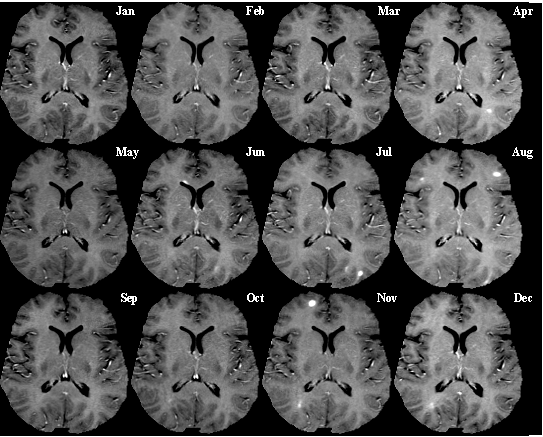 George - The way we did this is that we searched for parents of MS patients who had one normal gene for the enzyme and then one abnormal gene, and then we look to see in the MS offspring which [gene] they inherited. Now the odds are 50/50 that they would get the normal gene or the abnormal gene. We found 35 parents with this defective gene on one side of one of their chromosomes and a normal gene on the other side. When we examined the MS offspring, for them to have inherited the abnormal gene all 35 times would be like flipping a coin 35 times and getting 35 heads, and that's exactly what we found. We found that invariably, this was transmitted. So, this is as strong as an association, maybe the strongest association that's ever been reported in one of these complex diseases. And it's really now making us think in terms of causality rather than association.
George - The way we did this is that we searched for parents of MS patients who had one normal gene for the enzyme and then one abnormal gene, and then we look to see in the MS offspring which [gene] they inherited. Now the odds are 50/50 that they would get the normal gene or the abnormal gene. We found 35 parents with this defective gene on one side of one of their chromosomes and a normal gene on the other side. When we examined the MS offspring, for them to have inherited the abnormal gene all 35 times would be like flipping a coin 35 times and getting 35 heads, and that's exactly what we found. We found that invariably, this was transmitted. So, this is as strong as an association, maybe the strongest association that's ever been reported in one of these complex diseases. And it's really now making us think in terms of causality rather than association.
Hannah - And can you tell us what this gene does, the biochemical studies that link the genes and multiple sclerosis, and vitamin D together?
George - One of the things that's important to point out is that maybe vitamin D shouldn't have really been called a vitamin anyway. It's really more like a hormone. So in contrast to something like vitamin E or vitamin A which really fulfils the traditional definition of a vitamin - something you take in small amounts externally and is important in metabolism - Vitamin D is something you can make yourself. You regulate it very carefully and we've had millions of years of evolution to develop strategies for regulating vitamin D. The way that it works is that you've got the precursor in your skin, as Elina said, and it's acted on by sunshine - ultraviolet radiation converts it to an active form. But there is an important additional step which is regulated by the enzyme we were just talking about. It's called 125-alpha-hydroxylase and it's the one that converts vitamin D to the active form. And so, we have the ability to control vitamin D and this is going to relevant to a number of questions I think about how much to take and so forth because in fact, the internal system that we have developed over many, many years actually regulates this very tightly.
Hannah - What do you think then about vitamin D supplements in the food?
George - I've not come to this quickly, I have to say [I've come to this conclusion] over a large number of years and what I've said to the Scottish government, along with a number of other people who were there to advise them, was that we thought that their solution was probably best reached by administering it to the population. That's taking into account a number of factors: The level of deficiency, the likelihood that it's related to a number of diseases, and the very low risk that's involved, the fact that it's dirt cheap and so forth. All those things, not to mention human nature, telling people to take things doesn't always work as you know. And so, that was our conclusion.
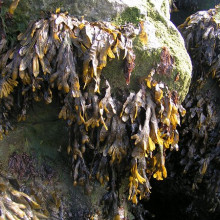
14:43 - Seaweed set to ignite biofuel boom
Seaweed set to ignite biofuel boom
Already a major contributor to the food and fertiliser industries, seaweed could also hold the key to low cost biofuels thanks to the creation of an algae-eating 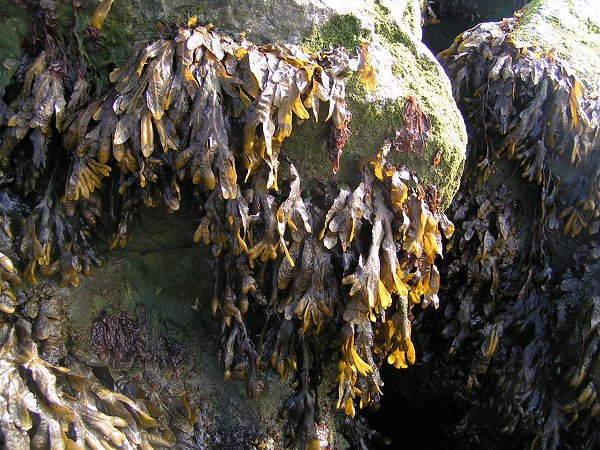 strain of E. coli.
strain of E. coli.
Writing in Science, Adam Wargacki and his colleagues from the US-based company BAL, which stands for Bio Architecture Lab, have developed a modified form of the E. coli bacterium capable of unlocking the chemical energy stored inside seaweeds and turning it into ethanol.
In tests, their re-engineered bugs work with an efficiency of over 80% and are able to generate alcohol concentrations on par with processes currently used to produce bioethanol from arable crop waste.
The major hurdle the team needed to overcome is the fact that, in seaweed, a large amount of the energy is stored in the form of a complex sugar called alginate, which is difficult for individual bacterial strains to break down, let alone ferment to alcohol.
To engineer a seafood-favouring form of E. coli, the BAL team "borrowed" genes from other organisms and used them to "tool up" their new bug strain. These included adding a secretable Pseudoalteromonas "alginate lyase", which breaks up the seaweed alginates into smaller, more-digestible fragments, and a family of genes, from a water-borne bug called Vibrio splendidus, that transport these alginates into the bacteria and then break them down.
Set to work on a diet of the common brown seaweed Saccharina japonica, the engineered E. coli yielded alcohol concentrations of 4.7% within 48 hours. Exploiting seaweed in this way offers major advantages over traditional approaches to biofuel production.
Feasibility studies have suggested that each hectare of sea would yield a dry-weight of 59 tonnes per year, which could produce as much as 19,000 litres of bioethanol, which is twice what cane can do and five times the yield achieved from maize.
And as the team point out, seaweed aquaculture would not require arable land and therefore would not impact on food production, it doesn't require fertilisers and may even help to decontaminate nitrogen-polluted water and, even more critically, this form of farming does not require irrigation!
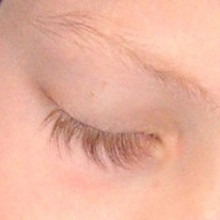
18:18 - A good night’s sleep may make bad memories worse
A good night’s sleep may make bad memories worse
A study published this week in the Journal of Neuroscience indicates that sleep can reinforce unpleasant memories. Remaining awake, on the other hand, helps you to forget.
University of Massachusetts, Amherst scientist Rebecca Spencer and her colleagues showed groups of volunteers a series of images and asked them to rate how emotionally harrowing they were.
12 hours later, after one group had been allowed to sleep for 8 hours, whilst the other group were forced to stay awake, the volunteers were then asked to reexamine the pictures.
Those who slept were much better at remembering which images they had already seen compared with those who stayed awake.
Not only that, but those who slept still rated the images to be as, if not more, traumatic as the first time they saw them. Those who stayed awake, on the other hand, found the images to be less harrowing after 12 hours.
The researchers controlled for the fact that the sleep deprived group were not simply too tired to respond to the pictures emotionally by repeating the experiment at different times of day.
These results may explain why some people can find it difficult to fall asleep after a traumatic experience, because this is the brains way of stopping you remembering something that would be better off forgotten.
So, contrary to the prevailing view that 'all will seem better after a good night's sleep' - this might actually be the opposite of 'what the doctor ordered' for people exposed to traumatic events.
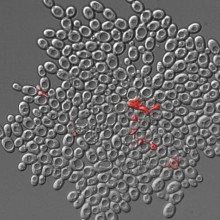
20:28 - Evolving Multicellularity
Evolving Multicellularity
with Professor Michael Travisano, University of Minnesota
Prior to about 1 billion years ago, all life on earth consisted of single-celled organisms. Then something happened to trigger squads of these cells to team up together to produce the first multicellular organisms, like our bodies, and this was a watershed in the evolution of life on Earth. Now, researchers at the University of Minnesota have managed to make yeasts do something similar, but in this case it only took them about 60 days...
Michael - The experiment was pretty simple. We just grew yeast as we normally do in the lab and then every day, we let them sit on the bench and we had it race to the bottom. And whatever yeast got to the bottom first, we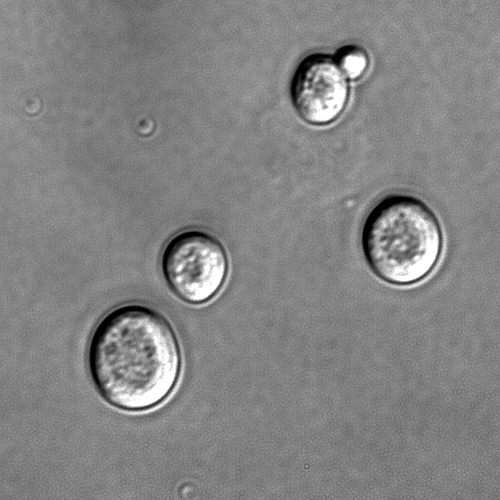 took those and started the culture again. We did this for 60 days every day, doing this race to the bottom. And unlike Galileo's experiment where it doesn't matter how heavy you are, for the yeast cells, the bigger heavier ones get to the bottom first and so, by using this mechanism of selection, we were able to select for things that were big to get to the bottom.
took those and started the culture again. We did this for 60 days every day, doing this race to the bottom. And unlike Galileo's experiment where it doesn't matter how heavy you are, for the yeast cells, the bigger heavier ones get to the bottom first and so, by using this mechanism of selection, we were able to select for things that were big to get to the bottom.
Chris - So there's a strong selective pressure for bigger cells but why does that translate also into clumps of cells, cells linking together?
Michael - There's two ways that the yeast could get bigger. One, they could just get a bigger cell and we did see some cells get quite large, but it's much easier physiologically and via adaptation to just have your daughter cells stay attached to you when you reproduce. And so, we'd end up with clusters of daughter cells attached to their daughter, attached to their daughter cells, and whole big family groups getting to the bottom very, very quickly.
Chris - And what was the relationships between these cells? Where they literally just sticking together or did they really begin to behave as though they were a family of cells where one cell did one job and another cell next door to it relied on it to do that job, and did a complementary job?
Michael - Well originally, they all did more or less the same thing. The whole family group got to the bottom at the same rate as each other and that was the big selective benefit. But as we ran the experiment along, we observed that a small fraction, about 5% would go through a kind of cellular suicide and that suicide promoted the adaptation of the whole group. It allowed the group to reproduce faster. So we began to see some differentiation as we ran the experiment through.
Chris - Have you interrogated the cells to see in what way they were changing to enable them to do these different jobs? How was it arising?
Michael - Mostly, we made videos to be honest and we watched the behaviour of the groups as they grew in our culture and we could see how the reproduction was happening. The number of cells in one of these multicellular individuals would increase and then it would cause a pressure and a daughter clump would break off. We were able to identify that the targets that the cells that were the most likely to allow for that breaking off were the ones that were dying. That was the mechanism that we did the most interrogation by.
Chris - The thing is, if I look at my own body, there are bits of me which if other bits of me don't work, those bits are inviable. So if you took your clumps of yeast cells and broke them up, would the cells then loose viability because they didn't have their neighbour to sustain some functions that they themselves were now deficient in. A bit like, if I took one of my organs, it can't survive without the blood supply provided by our blood vessel and so on?
Michael - Right. So, these are very simple multicellular organisms and so, they're much simpler than anything, than us. With very simple other extent natural multicellular organisms, if you break them up, you can often recover the whole individual from a single cell and you can even do this in the lab with plants. And like those natural experiments, we can do the same thing. If we break them up into individual cells, except for the dead ones - the dead ones don't do anything - then we'll recover the entire multicellular individual.
Chris - And just to finish this off, what do you think this tells us about how the process probably did happen back in evolutionary time?
Michael - I think it tells us that you can very simply evolve multicellular organisms just by a very slight change in the relationship between a unicellular reproductive event. Just by not letting your daughter or you granddaughters and so on kind of go off, but by sticking together, by having a cooperative strategy, that you can evolve multicellularity readily.
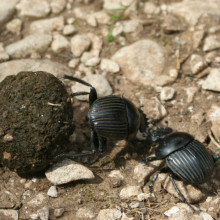
24:52 - Suicidal Comets and Dancing Beetles
Suicidal Comets and Dancing Beetles
with Carey Lisse, John Hopkins University Applied Physics Laboratory; Congcong He, University of Texas Southwestern medical centre; Richard Allen, UC Berkeley; Emilay Baird, University of Lund
Comets in a New Light
A Comet diving into and disintegrating within the Suns atmosphere has been observed by scientists in the US.
The comet
C/2011 N3 is one of the so-called Kreutz family which pass extremely close to the Sun's surface. Over 2000 of them have been detected in the past 15 years.
But their paths through the Sun's atmosphere were previously uncharted and now thanks to NASA's Solar Dynamics Observatory, Solar Heliospheric Observatory and Solar-Terrestrial Relations Observatory, the self-destructive path of this most recent C/2011 N3 comet has been observed.
Carey Lisse from the John Hopkins University Applied Physics Laboratory comments on the discovery...
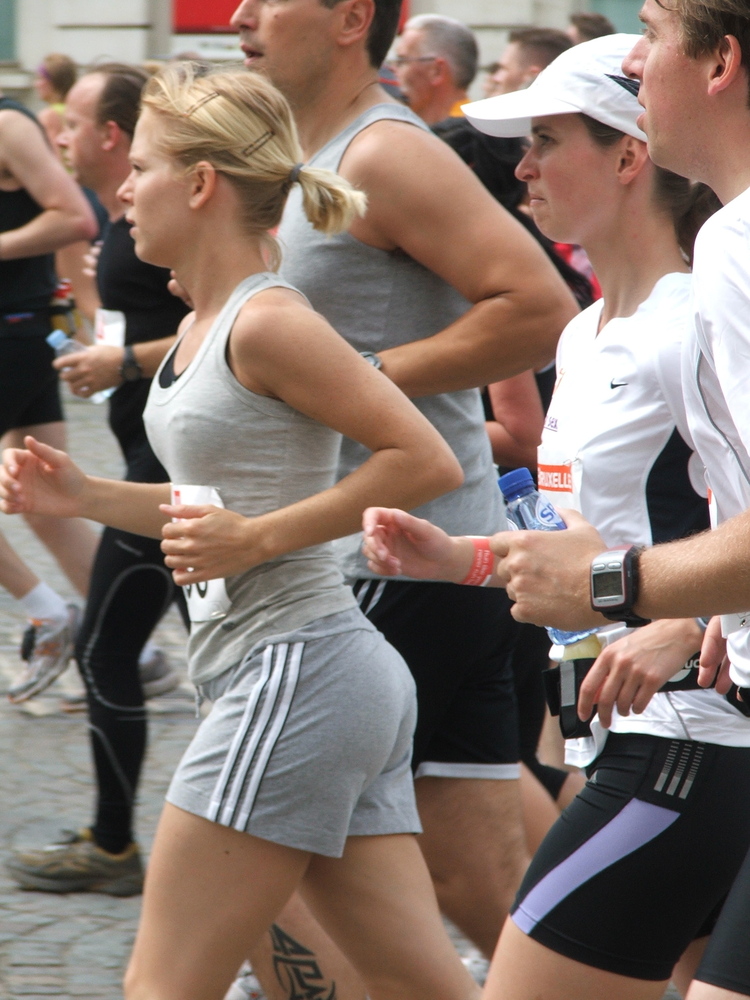
The Benefits of Exercise
Exercise induces the clearance and recycling of components within our cells, resulting in protection against metabolic disorders such as diabetes.
Working with mice,
Congcong He and colleagues, from the University of Texas Southwestern medical centre, found that exercise triggers a process called autophagy - the self-clearance and catabolism of certain cell components.
This is mainly triggered within skeletal and cardiac muscle to enable increased endurance and glucose metabolism simultaneously protecting against certain metabolic conditions.
Detecting Earthquakes with Citizen Science
Citizen scientists could lead the way for
earthquake research and detection in the future.
Citizen science involves members of the public reporting on and collecting data to aid scientific research. Recent electronic applications in the field of seismology include the 'Quake-catcher' program turning your computer into a seismometer and placing it on a global network as well as more mobile apps such as the 'i-shake Cal' app for iPhones collecting ground shaking measurements.
Publishing in the journal science, UC Berkeley's Richard Allen explains their importance in seismology.
Dancing with Dung
And finally, the mystery of why
dung beetles dance, has been solved by scientists at the University of Lund.
Dung beetles form individual balls from a dung pile which they then roll a safe 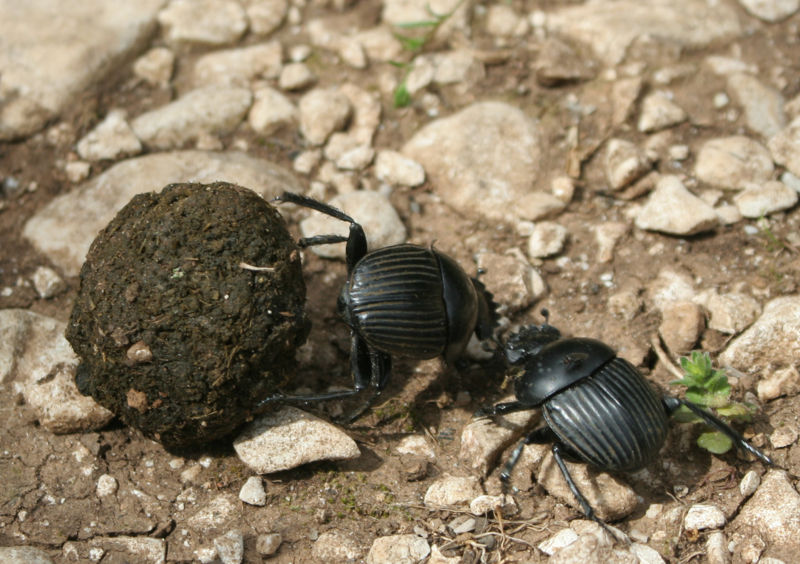 distance away to feed on without competition. The beetles are known to climb on top of their ball and spin around along certain points of their route and the reasons behind this have previously been unknown.
distance away to feed on without competition. The beetles are known to climb on top of their ball and spin around along certain points of their route and the reasons behind this have previously been unknown.
Working with beetles in the lab, Emily Baird has discovered that this dance it's all about the beetles knowing where they're going...
The work is published this week, in the journal PLoS one.
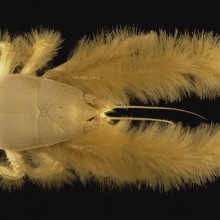
29:40 - New Species at Hydrothermal Vents - Planet Earth Online
New Species at Hydrothermal Vents - Planet Earth Online
with Katrin Linse and Ali Graham, British Antarctic Survey
As we recently reported here on Naked Scientists, fifteen new species were recently discovered on the seabed of the Southern Ocean in Antarctica. And one of them, nicknamed the Hoff crab because it had a hairy chest like David Hasselhoff, even went viral making headline news around the world.
The new species were all found on the East Scotia Ridge, an area on the ocean floor that is littered with hydrothermal vents.
The UK-led project involved universities, the National Oceanography Centre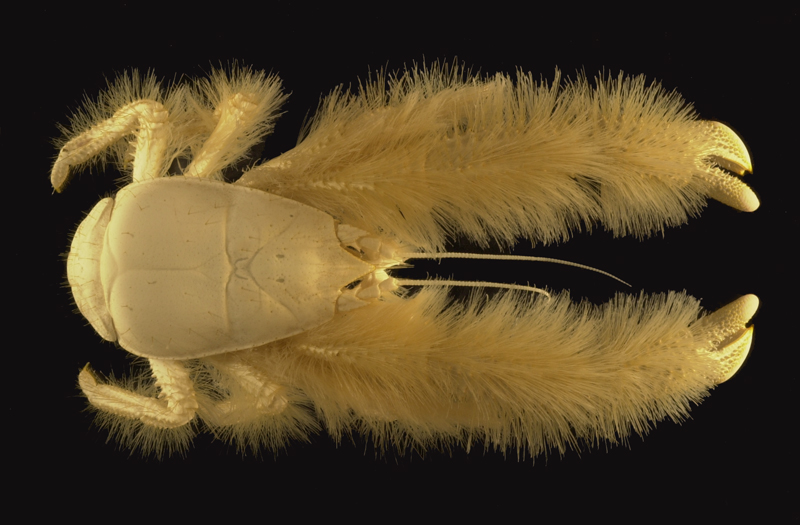 and the British Antarctic Survey, as well as a collaboration with Woods Hole
and the British Antarctic Survey, as well as a collaboration with Woods Hole
Oceanography Centre in the United States. Planet Earth podcast presenter
has been speaking to two of the team - marine biologist Dr Katrin Linse* and
geologist Dr Ali Graham - both from the British Antarctic Survey...
Katrin - What I have brought out today are samples of the animals we collected. For example, the 'hoff crab'.
Sue - That could easily fit in the palm of my hand. They're white and pale, presumably because there's no light down there.
Katrin - Yeah. This is a small female. She is about 6 cm tall, the large males were up to 12 cms tall and they had big claws, but also the females you can clearly see a really hairy chest and along the bottom of their legs.
Sue - So it's not just the males then that have the hairy chests it's the females too?
Katrin - No, the females have it too.
Sue - Ali, tell me a little bit about where these creatures were found because they're beside some very unusual structures called hydrothermal vents.
Ali - The East Scotia Ridge itself is an area where the seafloor - the lithosphere - which is the hard outer shell of the earth is actually extending and stretching and where this happens, magma from the mantel actually up wells and along the ridge itself you get volcanic activity. And because the crust has a lot of water in it that water is heated geothermally, like geysers, and eventually through fissures and through fractures and faults in the crust, this hot water finds its way out and it finds its way out through vents.
Sue - And these vents look almost like a termites nest - tall tapering structures but with these enormous plumes of smoke coming out which, I assume, are sulphurous.
Ali - Exactly, that's a very good description. They are tall conical chimneys formed of precipitates that come out of the water, emerging from the ocean floor.
Sue - You've got a couple of other little jars here.
Katrin - The piece I personally love the most is in this large top bag, because here, what you actually now see emerging is the top of the chimney and in the top here you see a hole of about 4mm, this is where the smoky hot water would come out at temperatures of up to 380 degrees.
Sue - Wow! So that's the top of a hydrothermal vent?
Katrin - Yes. Next to it are the barnacles and then all the other creatures.
Sue - Ali, you were also involved as a geologist in mapping the ocean floor itself.
Ali - That's right, yes. Over the past few years we've had two research trips to the East Scotia Ridge. The first one we aimed to actually map out the regional sea floor just using sonar from the underside of our ship. On our second, we took the remotely operated vehicle, Isis, down to areas where we knew there were vents and we did even more detailed mapping of the sea floor with a smaller sonar.
Sue - What resolution then did you produce?
Ali - Initially our maps were, maybe, down to say a 20 metre size, so we could see things that were larger than around 20 metres on the sea floor.
Sue - But not necessarily a hydrothermal vent.
Ali - Well, the vents themselves were only less than a metre in width so we would have totally missed them even from our ship mapping, the first initial mapping we did. The second trip we could actually make maps down to things that were almost the size of a shoebox. So we actually started picking up blips on our map and when we looked at them in detail in three dimensions we could see these were the actual individual chimneys themselves, so the geophysics actually directed us straight to where these vents were.
Sue - It's an obvious question. For scientists it's like, well, new species, wow, but is it important on the grand scheme of things?
Katrin - We know from some Antarctic deep-water species that they seem to be the origin of life of the deep-sea fauna globally. We don't know this about the hydrothermal vents. We know that in the last 30 million years the Antarctic marine fauna was almost buried off from the non-Antarctic through the cold water and the circum-Antarctic current; these are specially adapted animals. We have lots of hydrothermal vents north of the Antarctic, these were first found in the Antarctic. How do our species link in to the global ones? Are they the ancestors of everything or not? We don't know. And then the big question is, where did life on Earth originate at the start, could it have been in the deep waters in very - nowadays - toxic, sulphuric environments. This is why this research is so exciting and important.
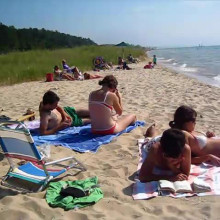
34:57 - The balance between Vitamin D production and Skin Cancer prevention
The balance between Vitamin D production and Skin Cancer prevention
with Kat Arney, Cancer Research UK
Hannah: - Well apart from food, a major source of vitamin D is exposure to sunlight which makes the hormone in the skin. So, some sun is good but therein lies the rub because sunlight can also cause skin cancer. Well to find out what's best, we've asked our own Dr. Kat Arney from Cancer Research UK to take a look at the evidence.
Kat: - Despite what some people claim about the cancer-preventive properties of vitamin D, in reality the scientific evidence is much more confused. For a start, most of the studies that have looked at the links between vitamin D and cancer suffer from poor methodology - meaning that  their methods aren't sufficiently rigorous to draw any strong conclusion. For example, most studies are what we call "ecological" - they look at how rates of different cancers change depending on where in the world you live, and find that the further north from the equator you go, the more likely people are to develop, or die from, many types of cancer.
their methods aren't sufficiently rigorous to draw any strong conclusion. For example, most studies are what we call "ecological" - they look at how rates of different cancers change depending on where in the world you live, and find that the further north from the equator you go, the more likely people are to develop, or die from, many types of cancer.
The big idea is that the sun's rays are weaker at higher latitudes, so people living in northerly places make less vitamin D. And it's this that, in theory, accounts for their higher rates of cancer. But in fact it's really hard to tell what anyone's individual vitamin D level is based just on where they live. Everyone's skin is different and makes different amounts of vitamin D with the same sun exposure.
These studies also tend not to adjust for other things that could explain the differences, such as what people eat, how active they are or how wealthy they are, and their behaviour such as tanning, taking sunny holidays, or working outside. All these things have a much greater effect on a person's vitamin D levels than simple geography does.
In terms of vitamin D preventing cancer, the strongest evidence is for bowel cancer. It seems that low vitamin D is associated with higher bowel cancer risk, but it's not clear whether the vitamin is actually preventing the disease, or whether it's representing another aspect of health. And the evidence for a role for vitamin D in other types of cancer varies from non-existent to limited. Trials testing whether vitamin D supplements can reduce the risk of cancer haven't shown an effect, but they've also had problems with the way the studies were done.
So what do we know? It's clear that we all need a bit of sunshine in our lives, and that vitamin D is important for general health but when it comes to cancer risk there's one long-known and very strong association between UV light from the sun and sunbeds - and that's skin cancer. Excessive UV exposure - particularly getting sunburnt - significantly increases the risk of skin cancer, including malignant melanoma, the most dangerous form of skin cancer.
For most people it should be possible to strike a balance between making enough vitamin D and not raising the risk of skin cancer, although how much vitamin D you can make through your skin depends on your skin type, and your behaviour - such as whether you stay in the house all the time, or wear thick clothing that covers your whole body. But it's important to remember that the time in the sun needed to make enough vitamin D is usually short, and less than the amount of time it takes the skin to redden or burn.
So there's no need to roast yourself to a lobster-like shade of red in an attempt to boost your vitamin D, as it won't help - and not only will you be increasing your risk of cancer, you'll also be helping your skin along the way to that lovely leather-handbag look."
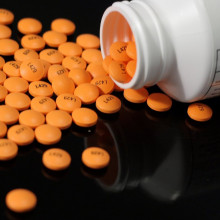
38:21 - Vitamin D and Cancer
Vitamin D and Cancer
with Professor Sir John Burn, Newcastle University
Chris - There is confusing and contradictory evidence about the link between vitamin D and cancer. Scientists now need to find out what the precise nature of that link is. Professor Sir John Burn is a Clinical Geneticist in Newcastle University and for the last 20 years, he's been leading an international consortium looking at cancer prevention in groups of people with a genetic predisposition to develop bowel cancers. Last year, they confirmed that aspirin can protect these individuals. Now they're turning their attention to vitamin D. Hello, John. So, who are these patients that you're looking at?
John - I've been working for 20 years with people with hereditary predisposition to bowel cancer in particular. They have a problem with genes called mismatch repair genes. They cannot fix spelling mistakes in their DNA.
If they inherit that gene they have about a 50% chance of developing cancer, mainly of the bowel and also of the womb, and obviously, they're very keen to help with attempts to find ways to reduce the risk of cancer which is of relevance to them and their families. But also, it's relevant to the rest of us because about 1 in 20 of us will develop a colon cancer in our lifetime and about a 6th of those have a problem with the mismatch repair genes. It's just that they acquire it during their lifetime rather it being an inherited problem.
These [people] are a model group in which we can study interventions that you couldn't really test in a rigorous way in the general population, because cancer happens so slowly in general population. You'd have to do vast studies over decades. And as you say, what we showed with the aspirin study, where we gave people aspirin for two years, was that after five years we had reduced their bowel cancer risk by over 60%, and that was on top of the benefits of giving regular colonoscopies and removing polyps.
That was a huge boost for our idea of these genetically targeted trials. So in the next five years or so, in addition to comparing different doses of aspirin to see if we can get away with less, we'd also like to see if we can give people vitamin D and whether that would give us the rigorous randomised control trial data which would justify us giving these patients and their families vitamin D on a regular basis.
 Chris - Before we dwell on the vitamin D, could we just have a look at what you think the mechanism is for why aspirin protected those people because that's a dramatic difference - a 60% reduction?
Chris - Before we dwell on the vitamin D, could we just have a look at what you think the mechanism is for why aspirin protected those people because that's a dramatic difference - a 60% reduction?
John - It is and in fact, that evidence has been building over 25 years. In fact, that story is very parallel to vitamin D in a way because it's the observational studies of people who were using a lot of aspirin-like drugs that demonstrated that there was a massive effect, but we couldn't get randomised data until we did our study which has really nailed it.
The answer is that aspirin again, somewhat like vitamin D, is probably an essential nutrient, something you need from the outside, and it has a wide range of effects. One of them is to promote programmed cell death or apoptosis, again [this is] like vitamin D. Plants make salicylate, which is the core of aspirin, in order to trigger programmed cell death when they develop infections. It's their way of defending themselves.
Interestingly, up until 100 years ago, we would have had quite a lot of salicylate in our diet because of eating wilder foods. Now that we grow everything under control, they don't get exposed to infection, so the salicylate never forms.
There are reasons we have seen in the laboratory, lots of evidence in the lab that says aspirin has a number of other effects particularly blocking inflammation which is a part of the cancer process. So that might also be part of it.
Chris - And what sort of dose of the aspirin do you need in order to get these effects? Would the same doses that are effective in preventing or reducing 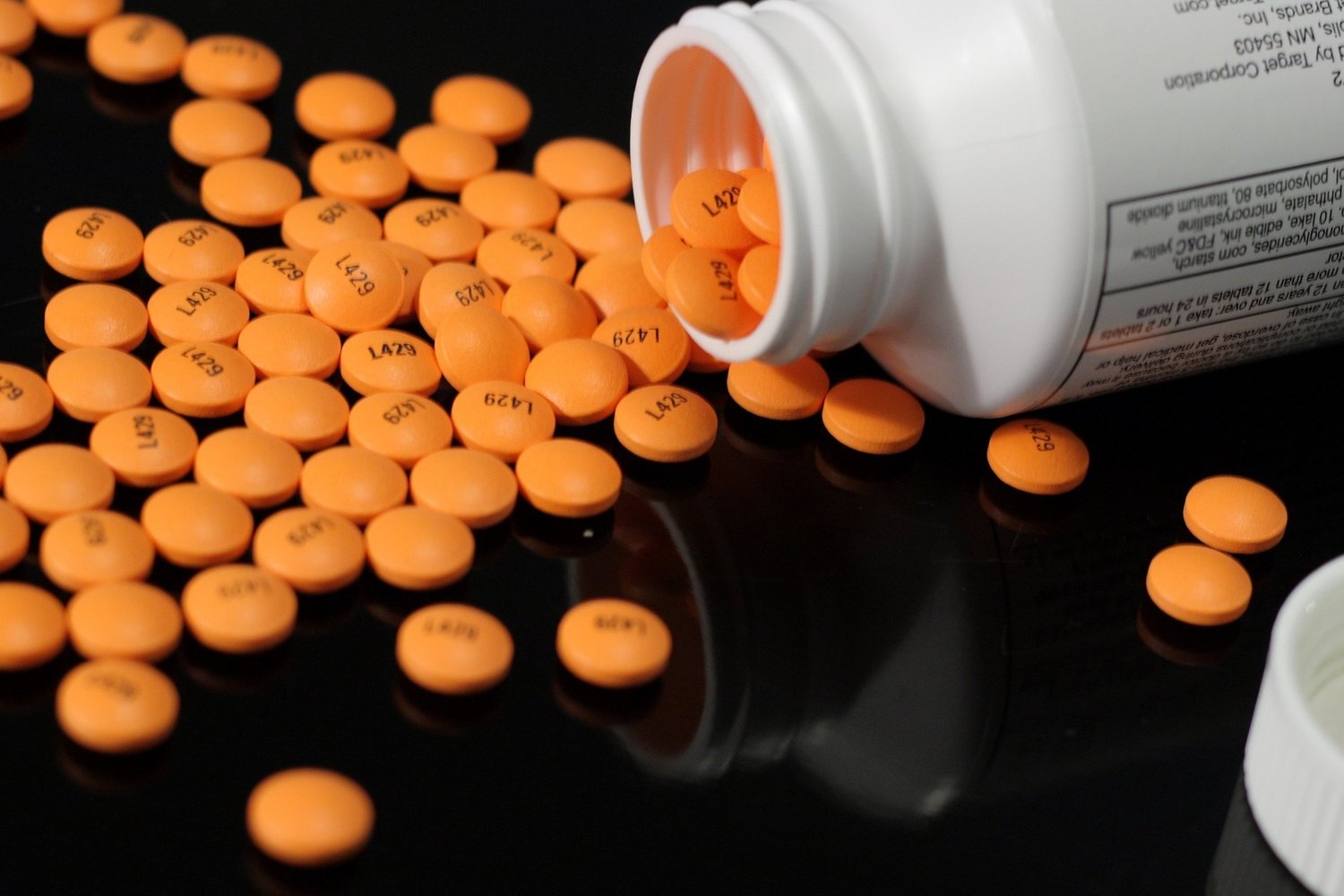 the risk of heart attacks and strokes also be effective in the prevention of bowel cancer, or do you need a bigger dose?
the risk of heart attacks and strokes also be effective in the prevention of bowel cancer, or do you need a bigger dose?
John - That's the $64,000 question. We used two aspirins a day and got this big effect. Peter Rothwell did some wonderful studies over the last few years, looking at people who took part in the very early aspirin studies back in the '80s and found that those people had fewer cancers 10 years later when he checked them on the cancer registries.
Just last week, I was on the BBC talking with Professor Ray from St. Georges who had not found an effect. He had looked by meta analysis, which we're going to talk about in a moment, by pooling all the data on aspirin and cancer, and heart attacks to see whether people at low risk should take it. He didn't see a benefit, but that was because those studies only followed people for 6 years. The problem with these sorts of studies is you have to follow them for a very long time to see the benefit. In our high risk patients, they developed cancer much faster. That's why we were able to see the effect in only 5 years, but in the general population, you'd have to wait 10 years to see the benefit.
That, of course, has general relevance to this evening's conversation because when you do preventive work, you might have to wait a decade to see the benefit. You can't actually see the people who didn't get the disease. They never knew they were going to get it and they were "saved", so to speak. So all we ever see are the side effects.
A lot of the preoccupation has to be with, "Is it safe?" And I was interested in George's observation that vitamin D does seem to be an extremely safe supplement. The body can handle it extremely well. So although there is a little bit of evidence to suggest people on very high dose of vitamin D might have a slightly increased risk of cancer, certainly at any sensible dose, the evidence does seem to be building that vitamin D is very clearly beneficial.
Chris - And how is it first spotted that vitamin D does seem to have this protective effect in bowel cancer?
John - People have been looking for clues to explain the strange distribution of cancer for many years.
We should at this point by way just say, a word for Casimir Funk who, 100 years ago, actually coined the term 'vitamins' or vital amines he derived it from, when he discovered thiamine. And I learned that from reading Bill Bryson by the way!
It's interesting to realise that up until 100 years ago, we didn't realise that it was just not the fact that you ate a lot of food. It was what was in the food that mattered. Of course, we knew about scurvy long before, but it was only generalised in the 20th century that there are these series of elements that we needed that would be beneficial to us.
How vitamin D affects cancer? Again, I mentioned earlier about programmed cell death. Vitamin D might well have a key part to play there. But the point is that vitamin D is a crucial component of our body. It's not truly a vitamin, as George said earlier, because we do manufacture it or in fact, we should manufacture it from exposure to light.
It gets into the cells where it meets the vitamin D receptor and it has an impact on a whole range of genetic mechanisms and cellular mechanisms. So it's not at all surprising that if you're deficient in it, then you might see all manner of side effects or effects on the body in the same ways if you take away vitamin C, people's teeth fall out and all sorts of things happen.
These chemicals are an integral part of our body which we expect to be there and when they're missing, all sorts of things fall apart, the immune system being one of the most obvious ones. There's lots of interest in the fact that vitamin D deficiency might be a factor in people developing infections in the winter, for example. So, you can see it's a story building that vitamin D could well be playing in a whole series of different scenarios where it could have an impact on our ability to either prevent cancer or destroy cancer.
Chris - You obviously don't know the answer yet, but what are you now setting up to try to find out whether vitamin D is going to make a difference?
John - Essentially, what we now know from the beautiful study of two colleagues during the meta analysis last year is that there's about 5% cut in cancer per 100 units per litre of vitamin D in your blood stream. So we can work with that and do power analyses, and that will tell us how many thousand people we need to treat for how many years. We're working on that at the moment. But with the aspirin dose-finding study, we're going to be looking for 3,000 gene carriers, we'll supplement them and then follow them for 5 to 10 years. That is the only way we'll absolutely nail to the ground whether vitamin D can prevent cancer at a sufficient level to justify supplementing the population. But in the meantime, I think clearly there's a strong evidence for self-medication for those who - certainly those who are not exposed to sun and those with darker skin who are living now a long way from the equator.
Which oily fish is high in Vitamin D?
It's fat soluble vitamins, so you need to have fat in a fish in order to get vitamin D. So all fatty fish such as salmon and mackerel are very good.
Can you overdose on vitamin D?
John - If you take very large volumes or quantities of vitamin D, you'll get hypercalcaemia and that can have adverse effects and indeed can cause kidney failure if you really overdo it. But as George was saying, in fact, it's very hard to get anywhere near those levels. You have to really work quite hard at it and for the general population, the sort of supplements that we will get from our diet and from adding a tablet of vitamin D to our routine is not going to take you anywhere near that level.
George:: I agree. The safety here has been demonstrated in volunteers. So, the institute of medicine's recommendation was up to 4,000 units a day for adults. The safety factor is huge so that volunteers have been given over 100,000 units a day when it's been gradually increased over time, which is you know, let's say 25 times the Institute of medicine maximum recommendation and no ill-effects were seen. So if you increase the amount of water you took a day by 25-fold, then it would be fatal, but you can increase the amount of vitamin D slowly and in fact, no side effects have been found. I'm not recommending people to take that, but there's a big safety factor.
Are darker skinned individuals more likely to be Vitamin D deficient?
Elina - Skin colouration is the most important personal characteristics which is affecting how likely you are to be Vitamin D deficient or how efficiently you can produce vitamin D by your skin. So for example, we were looking at this cohort of 45-year-old individuals and if among the white skinned individuals, we had less than 10% who were severely vitamin D deficient, so that by severe, I mean people who were at increased risk of rickets or bone deformities. In individuals who were from non-Caucasian ethnic groups there was 40% of them. So it's a massively strong risk factor for vitamin D deficiency. Chris - What about the other cultural aspect of this, people who are not necessarily very darkly skinned, but choose to cover themselves from head to foot in very dark fabrics so they don't see the sun? What about that practice? Elina - Yeah, that's of course is a combination of different things and you can't produce vitamin D by your skin without exposing some of your skin to the sunlight. Chris - So, what should people who are in these risk groups do? Should they go and get a vitamin D test then?
John - Yes, I think you raised the very important point of the additional cultural burden of concealment if you like from the sun which of course means that particularly, families of Muslim extraction are at increased risk, and clearly, the common sense thing is to add a dietary supplement of vitamin D - it's very straightforward. But I think it's also worth just generally picking up this point about our evolution. It's very clear that as we migrated out of Africa, we got paler the further north we went and that had to have been a Darwinian selection process and almost certainly, now that we know so much about vitamin D, the strong argument is that as we got further away from the equator, we had to get paler to remain healthy because our vitamin D levels were at risk. So, I think that both in terms of the genetic predisposition if you like to vitamin D problems and the cultural problems being that anyone from ethnic minorities should think very seriously about taking a vitamin D supplement.
Do light boxes combat Vitamin D deficiency?
Well I think there are a variety of different kinds of light boxes, but I think just light unless it's got an awful lot of radiation, it's not going to generate any vitamin D so that I mean, people can go to - you know, they go to tanning salons and so forth and that will in fact generate vitamin D, but the downside of this of course is it may have the consequences of being exposed to sun. So, the way around the dilemma, it seems to be, is if you want to increase your vitamin D content, then just simply take it by mouth as a regular vitamin D3.
Can you produce vitamin D from the sun that streams through your window?
Not unless your window is open. Window glass does block the UVB radiation.
Do sunblocks prevent us producing enough Vitamin D?
I think that everything needs to be considered in a balance and there is a very good reason why sunblocks are recommended but common sense should be applied in using those as well.
I don't put the sunblock on before I go outside but I go first outside and only after being there for 10 or 15 minutes I apply the sunblock. I allow both some vitamin D synthesis in the skin as well as protecting myself from any excess in sunlight.
Are Vitamin D tablets a decent alternative to the natural UV form?
I think the answer is yes, it is an acceptable alternative. The fact is, it is very difficult in our modern world to persuade people to get out into the sunshine. I mean, that is the best thing to do to get out into the fresh air, get exercise, as well as getting sun exposure, and obviously, that's going to affect things like obesity and so on. But the reality is that especially in the winter months in the northern climbs, you're still not going to get enough vitamin D from that source, so you really have to take a supplement unless you have a diet that is very rich in oily fish which would give you a natural supply.
Are Vitamin D fortified foods a good alternative?
George - Well chemically, it's a very simple molecule and it's identical really to what you make in your skin, so I don't think there's any reason to think that it would be any different. But I think the issue of supplementing the population is awkward. Despite the fact there's a control study showing that folate prevents neural tube defects, it's not added to the food and one can only compare what happened in America now. I'm a Canadian, but I'd have to say, the way they dealt with this was the way it probably should've been done which is that they supplemented their food within a couple of years that the results coming available and they were able to show that as much as 80% of neural tube defects were prevented. Here, I think these issues have been more controversial and just the fact that people want to put supplements then doesn't mean that it's bad. There are lots of examples where supplementation is very useful. Iodine and salt is a good example. No one argues about that and I think in a few years, nobody is going to be arguing about this as well.

55:24 - How does a headache hurt?
How does a headache hurt?
We posed this question to Peter McNaughton from the University of Cambridge...
Peter - Why do headaches hurt when it's well-known that brain tissue itself is not sensitive to pain? Well the answer is in the meninges which are the rather tough bag which surrounds the brain. During a headache, which is caused perhaps by a viral infection or perhaps by having too much to drink, the meninges become inflamed. The pounding of the blood through the blood vessels in the meninges causes the headache to hurt. So the short answer is that the reason the headache hurts is because of the meninges which are liberally innervated with pain sensitive nerve fibres rather than the brain hurts. The brain itself has no pain sensitive nerve fibres at all.
- Previous Biofuels from Beneath the Waves
- Next Why do veins look blue?





Comments
Add a comment